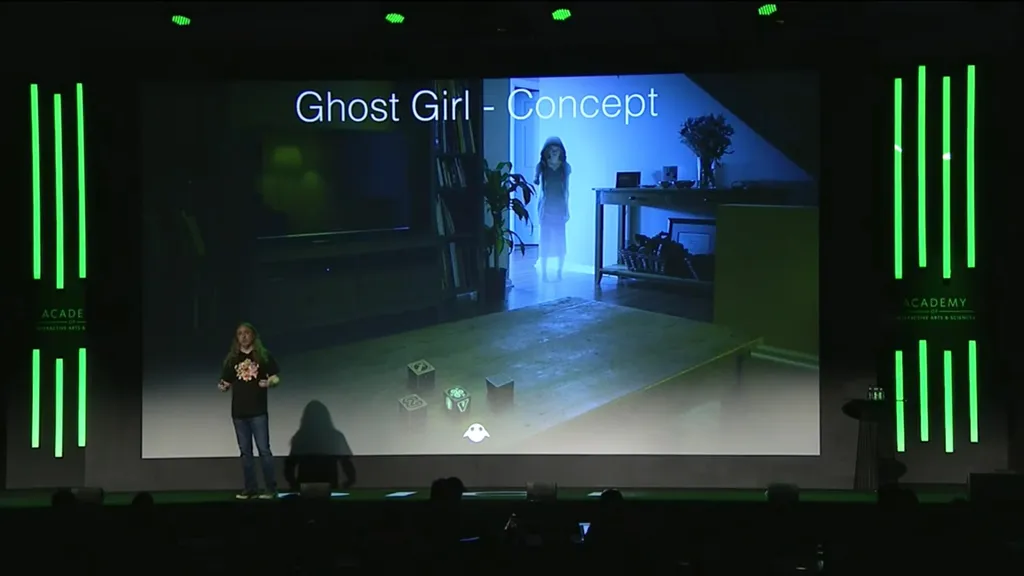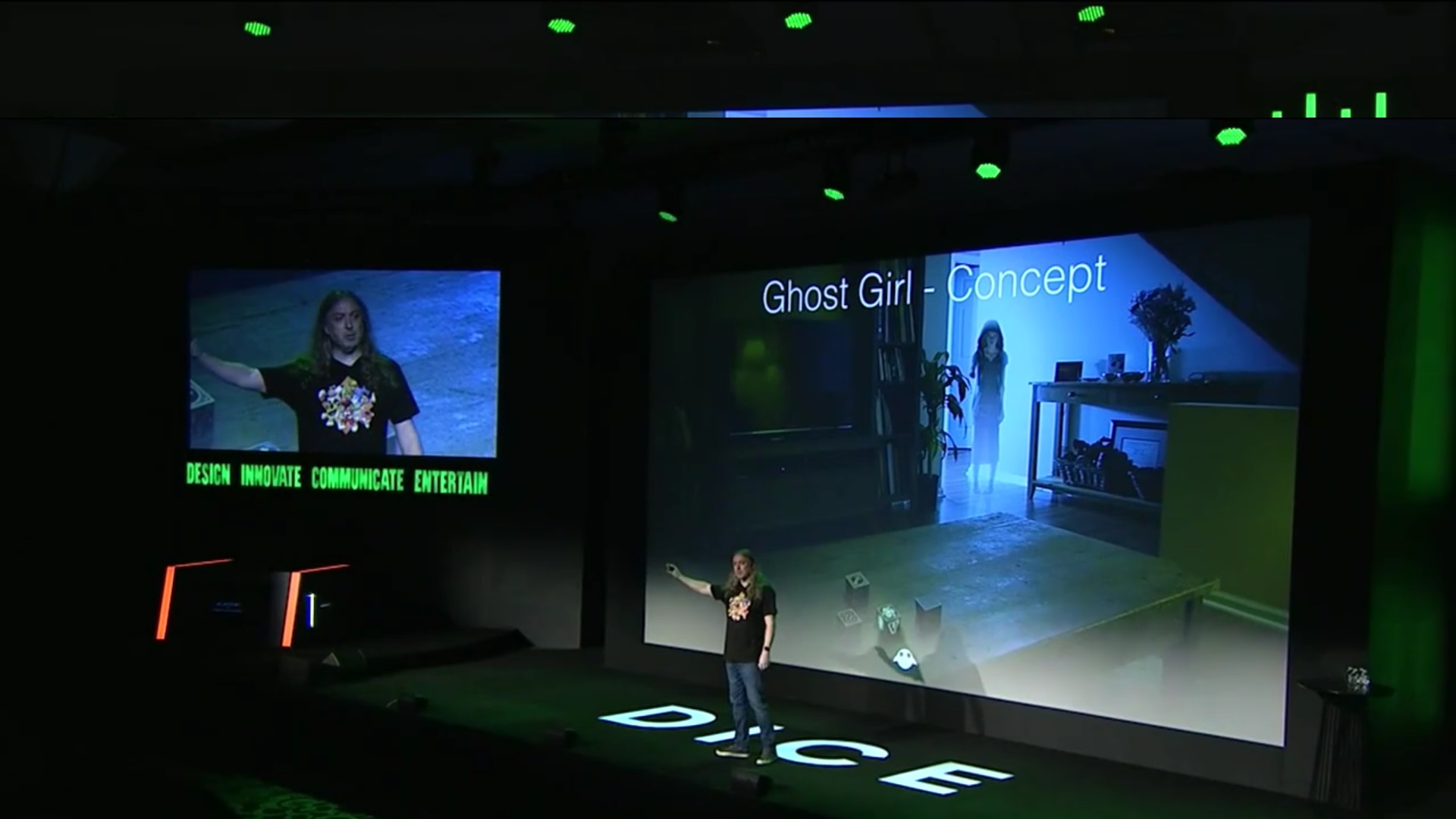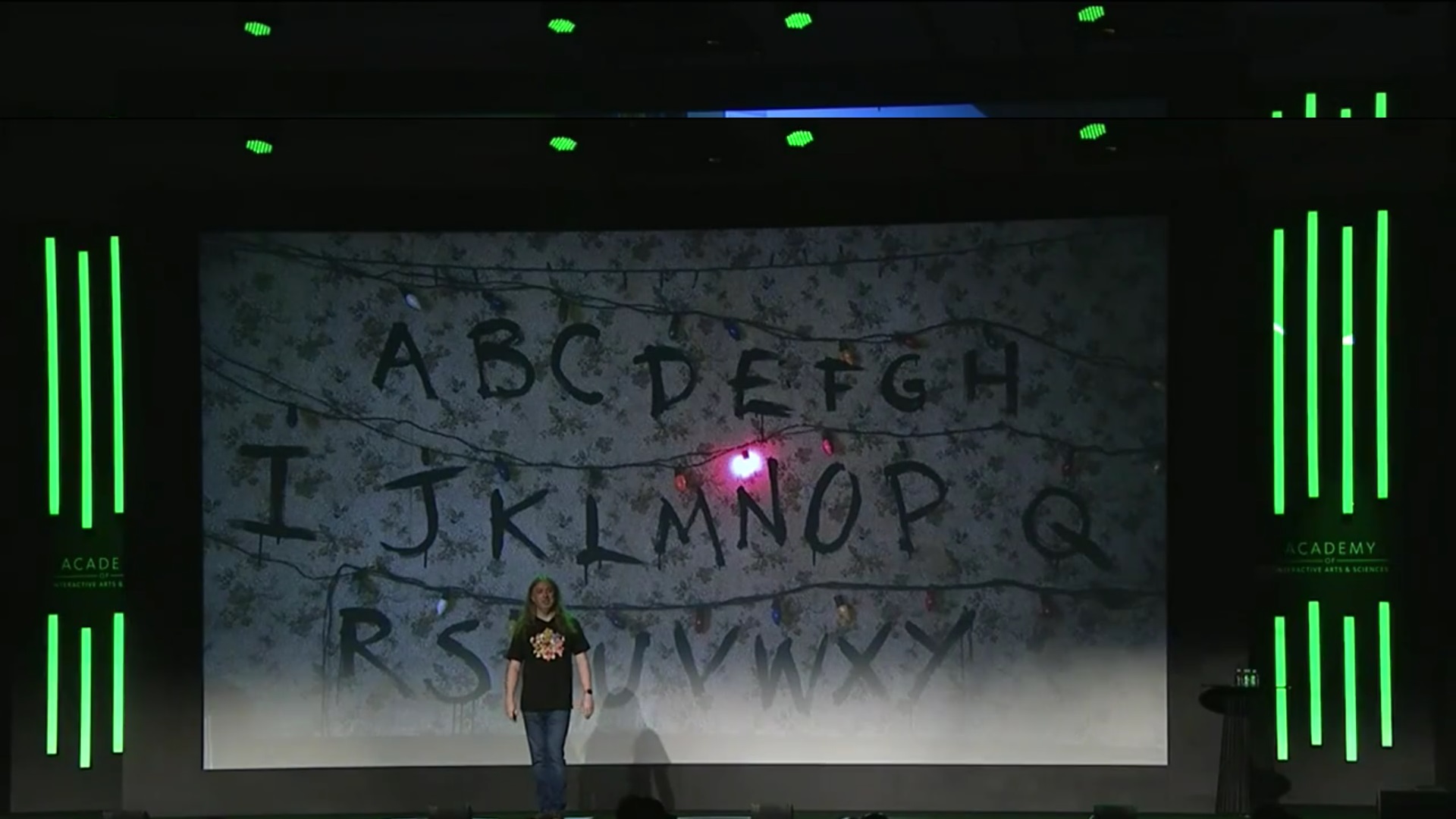Graeme Devine, Chief Game Wizard at Magic Leap, took the stage today at the DICE Summit 2017 in Las Vegas to talk about the future of mixed reality. Devine has been part of the digital games industry for more than 30 years, starting at Virgin Games in the ‘80s with stints at id Software, Ensemble Studios, Microsoft and Apple where he worked on a variety of projects from 7th Guest to Quake to Halo Wars. As Devine sees it, “The games industry will lead the way to mixed reality in every vertical” as it’s the only software technology that shows constant interaction with the end user.
But designing games in mixed reality will have its own set of challenges. When talking about how the video game industry has progressed over the past few decades, Devine says, “the worlds are much more beautiful, the graphics are much more stunning, but the world is still on the other side of a piece of glass where I play as Master Chief or Lara Croft. The challenge of mixed reality is to move game design on again, and it’s really hard because now the games happen on our side of the piece of glass, in our homes, to us directly, or at least the very cool ones will.”
Devine then went on to describe a mixed reality game concept he’s been talking about since as early as 2015, but he shared a few more details today on how interactive entertainment may play out on Magic Leap.
Graeme imagines an experience where you have a set of real wooden cubes that you place on a table. The tutorial of the game starts and explains how to use the cubes and how the interface can understand what real-world objects are. As you’re going through the tutorial, you hear a noise coming from an adjacent room, and see virtual lights flashing on and off. The lights get brighter and the noises get louder, compelling you to go investigate. Freaked out yet? Yeah, that’s the power of mixed reality!
“There in a room is a ghost,” Devine explains. “She looks directly at you – because she can because we know where your eyes are – and she points directly at you, and then she points past you behind you, so you look behind yourself and there on the ground in an outline of a dead body… in your house. And you turn back to look at Alice and she’s gone, and in your ear you hear ‘Will you help me?’ So now you’re on an adventure in your own house where a ghost is helping you solve a mystery that happened to you directly.”
Alice is the titular spirit of Ghost Girl, and you can communicate with her – and she you — by using the cubes. She can teach you a card trick with a real deck of playing cards, and she can interact with other real-world objects in your house, not in a corporeal sense, but by referencing them or shining lights or asking you to use them throughout your adventure.
Another neat concept Devine describes is how mixed reality experiences can interact with other forms of real-world media. Using Netflix’s Stranger Things as an example, he sees Alice and you hanging out on the couch watching the show and she says, “Well no one really calls it the Upside Down, not anymore, and it’s not really like that.” Alice may even suggest taking physical items you have in your house and doing interactive tasks with them, such as “This concept they have of putting Christmas lights up on the wall… we should do that! You should go get the Christmas lights out of your attic!”
Devine continues, “So we go to the attic and get the Christmas lights, we put A to Z under them, and all of a sudden we’re communicating with the other side. I’m doing things in the real world; these are not possible on a console, these are not possible on a laptop, they’re not possible on an iPad – these are things that can only happen in mixed reality.”
It all sounds frightfully eerie, but also very interesting and entertaining.
As part of his closer, Devine pushed hard that mixed reality must be a unique platform, it can’t just be an add-on. “It has to be perceived as differently as television is from radio, as radio is from newspaper,” explains Devine. “We need to create a compelling platform that people will line up for four days at Best Buy in the rain and snow.”
Now excuse me while I go put my coat, gloves and boots by the door…




























